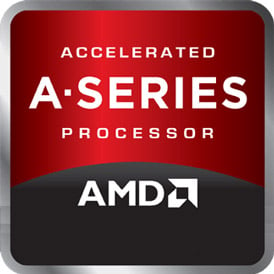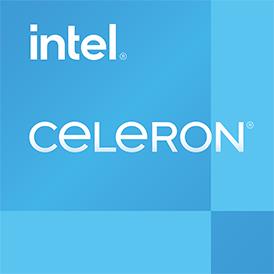 Geekbench 3, 64bit (Multi-Core)
Geekbench 3, 64bit (Multi-Core)
|
|
AMD A10-7300
4C 4T @ 1.9 GHz
|
3224
|
|
|
Intel Celeron N3010
2C 2T @ 1.04 GHz
|
1624
|
 Estimated results for PassMark CPU Mark
Estimated results for PassMark CPU Mark
|
|
AMD A10-7300
4C 4T @ 1.9 GHz
|
3010
|
|
|
Intel Celeron N3010
2C 2T @ 1.04 GHz
|
623
|
 Geekbench 3, 64bit (Single-Core)
Geekbench 3, 64bit (Single-Core)
|
|
AMD A10-7300
4C 4T @ 1.9 GHz
|
1310
|
|
|
Intel Celeron N3010
2C 2T @ 1.04 GHz
|
941
|
 Geekbench 5, 64bit (Multi-Core)
Geekbench 5, 64bit (Multi-Core)
|
|
AMD A10-7300
4C 4T @ 1.9 GHz
|
823
|
|
|
Intel Celeron N3010
2C 2T @ 1.04 GHz
|
427
|
 iGPU - FP32 Performance (Single-precision GFLOPS)
iGPU - FP32 Performance (Single-precision GFLOPS)
|
|
AMD A10-7300
4C 4T @ 1.9 GHz
|
409
|
|
|
Intel Celeron N3010
2C 2T @ 1.04 GHz
|
126
|
 Geekbench 5, 64bit (Single-Core)
Geekbench 5, 64bit (Single-Core)
|
|
AMD A10-7300
4C 4T @ 1.9 GHz
|
322
|
|
|
Intel Celeron N3010
2C 2T @ 1.04 GHz
|
226
|
 Cinebench R15 (Multi-Core)
Cinebench R15 (Multi-Core)
|
|
AMD A10-7300
4C 4T @ 1.9 GHz
|
139
|
|
|
Intel Celeron N3010
2C 2T @ 1.04 GHz
|
69
|
 Cinebench R15 (Single-Core)
Cinebench R15 (Single-Core)
|
|
AMD A10-7300
4C 4T @ 1.9 GHz
|
44
|
|
|
Intel Celeron N3010
2C 2T @ 1.04 GHz
|
38
|
 Cinebench R11.5, 64bit (Multi-Core)
Cinebench R11.5, 64bit (Multi-Core)
|
|
AMD A10-7300
4C 4T @ 1.9 GHz
|
1.8
|
|
|
Intel Celeron N3010
2C 2T @ 1.04 GHz
|
0.9
|
 Cinebench R11.5, 64bit (Single-Core)
Cinebench R11.5, 64bit (Single-Core)
|
|
AMD A10-7300
4C 4T @ 1.9 GHz
|
0.5
|
|
|
Intel Celeron N3010
2C 2T @ 1.04 GHz
|
0.4
|

